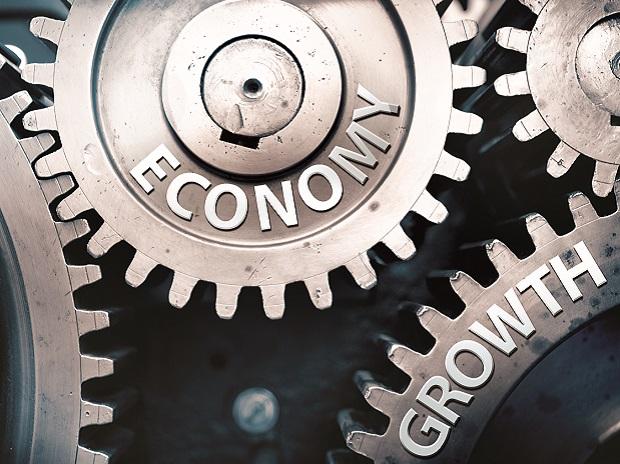WHAT IS FISCAL POLICY

Fiscal Policy
Fiscal policy, in simple terms, is an estimate of taxation and government spending that impacts the economy.
Types of fiscal policy
There are two types of fiscal policy:
Expansionary fiscal policy: This policy is designed to boost the economy. It is mostly used in times of high unemployment and recession. It leads to the government lowering taxes and spending more, or one of the two. The aim is to stimulate the economy and ensure consumers' purchasing power does not weaken.
Contractionary fiscal policy: As the term suggests, this policy is designed to slow economic growth in case of high inflation. The contractionary fiscal policy raises taxes and cuts spending.
What are the tools of fiscal policy?
There are two key tools of the fiscal policy:
Taxation: Funds in the form of direct and indirect taxes, capital gains from investment, etc, help the government function. Taxes affect the consumer's income and changes in consumption lead to changes in real gross domestic product (GDP).
Government spending: It includes welfare programmes, government salaries, subsidies, infrastructure, etc. Government spending has the power to raise or lower real GDP, hence it is included as a fiscal policy tool.
Fiscal policy objectives
Some of the key objectives of fiscal policy are economic stability, price stability, full employment, optimum allocation of resources, accelerating the rate of economic development, encouraging investment, and capital formation and growth.
Who sets fiscal policy?
In India, the Union finance minister formulates the fiscal policy.
What is the importance of fiscal policy?
Fiscal policy is a crucial part of the economic framework. In India, it plays a key role in elevating the rate of capital formation, both in the public and private sectors.
The fiscal policy helps mobilise resources for financing projects. The central theme of fiscal policy includes development activities like expenditure on railways, infrastructure, etc. Non-development activities include spending on subsidies, salaries, pensions, etc. It gives incentives to the private sector to expand its activities.
Fiscal policy aims to minimise income and wealth inequalities. Income tax is charged on all salaried persons directly proportioned to their income. Likely indirect taxes are also more in the case of semi-luxury and luxury items than that of necessary consumable items. In this way, the government generates a good amount of revenue and that also leads to a reduction in wealth inequalities.
A prudent fiscal policy stabilises price and helps control inflation.
Fiscal policy planning gives the larger chunk of funds for regional development so as to achieve a balanced regional development. It aims to reduce the deficit in the balance of payment.
Difference between monetary policy and fiscal policy
Monetary policy is concerned with the management of interest rates and the total supply of money in circulation. It is generally carried out by the RBI.
Fiscal policy, on the other hand, estimates taxation and government spending. It should ideally be in line with the monetary policy, but since it is created by lawmakers, people's interest often takes precedence over growth.
RELATED BUDGET TERMS
FISCAL POLICY NEWS
-
 High inflation causing tension between monetary and fiscal policy: Gopinath
High inflation causing tension between monetary and fiscal policy: Gopinath
On what needs to change, she said for the countries to manage such a difficult trade-off right, fiscal policy has to play a role| January 18, 2023, Wednesday -
 Will free food grain scheme affect Centre's fiscal planning?
Will free food grain scheme affect Centre's fiscal planning?
The pandemic made the govt to launch Pradhan Mantri Garib Kalyan Anna Yojana to provide free food grains to the poor. It has now ...| January 03, 2023, Tuesday -
 TMS Ep338: Demonetisation verdict, free food grain, markets, living wage
TMS Ep338: Demonetisation verdict, free food grain, markets, living wage
What does the SC's demonetisation verdict mean? Will free food grain scheme affect Centre's fiscal planning? Will India Inc see a ...| January 03, 2023, Tuesday -
 Pent-up demand, infra spend drove growth amid global headwinds: FinMin
Pent-up demand, infra spend drove growth amid global headwinds: FinMin
In its latest Monthly Economic Review, the Ministry said global economic developments remain complicated in November, and that ...| December 23, 2022, Friday -
RBI policy: Here is why the central bank needs to stop raising rates

RBI, following conventional wisdom, is guilty of wanting to show that it's doing something to bring down inflation while perhaps ...| December 08, 2022, Thursday -
 Govt likely to roll back states' ability to borrow more, says report
Govt likely to roll back states' ability to borrow more, says report
New Delhi has already stopped compensating states for the switch to the Goods and Services Tax regime from this year| December 02, 2022, Friday -
 Demand for musical instruments up; Chennai, Kolkata rank as top exporters
Demand for musical instruments up; Chennai, Kolkata rank as top exporters
India exported $22 million worth of musical instruments and their accessories in the first half of the current fiscal year, as ...| November 28, 2022, Monday -
 Budget 2023: Exporters urge govt for fiscal incentives, lower customs duty
Budget 2023: Exporters urge govt for fiscal incentives, lower customs duty
The meeting took place at a time when external demand is waning as exporters are facing global headwinds of high inflation, ...| November 24, 2022, Thursday -
 PMGKAY likely to end in December on fiscal, foodgrain constraints
PMGKAY likely to end in December on fiscal, foodgrain constraints
"The food subsidy burden is already crossing Rs 3 trillion and we are hopeful that it will be brought down below that mark," said ...| November 22, 2022, Tuesday -
 Bad structure, irresponsible politics behind India's poor fiscal governance
Bad structure, irresponsible politics behind India's poor fiscal governance
Instead of municipalities and states depending on transfers from the Centre, it should be the other way around| November 21, 2022, Monday




